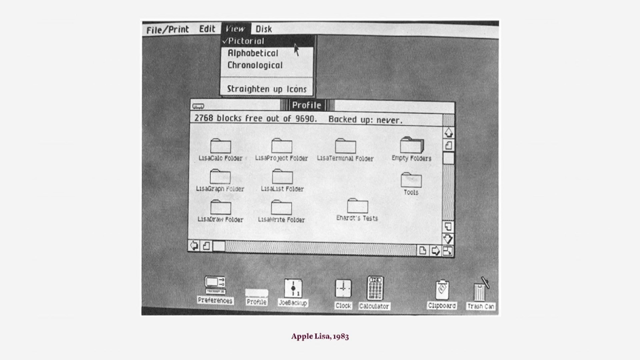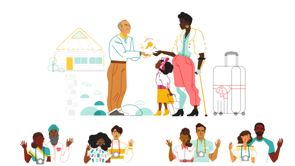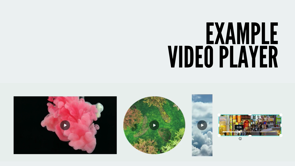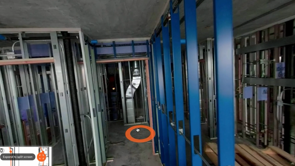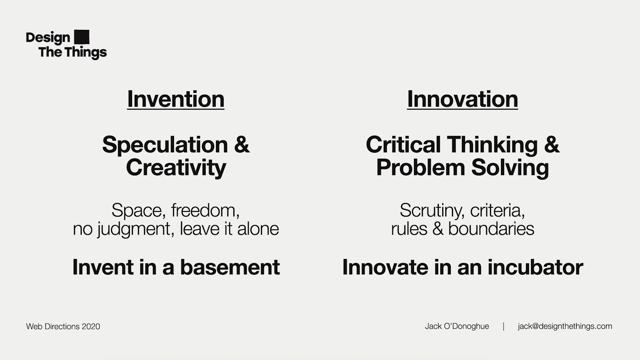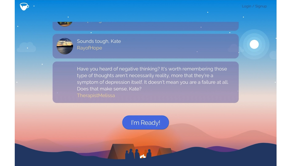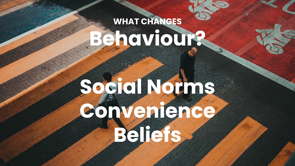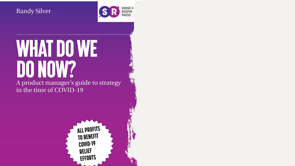Guiding your team strategy with User Research Principles

Emma Boulton–Guiding your team strategy with User Research Principles
(upbeat music) - Hi there.
It's great to be talking to you today, all the way from Wales in the UK.
I'm really sad that I couldn't make it to Australia this year.
I was so looking forward to coming back and visiting your wonderful country.
I love it so much but hey, I'm glad that I can still make it. And I'm here to talk to you about research ops principles and how I've used them to guide my team strategy at Babylon House.
So principles are one of those things that are talked about and used quite a lot in design.
But what actually is a principle? Well, the principle is a proposition or values that is a guide for behaviour or evaluation.
I like this definition because it talks about guiding behaviour or decision-making. I think this is a really useful thing to think about.
But what does it mean to behave in a principled way? I think we all know, we've all we've probably all got examples of people who are.
Who we could think of as behaving in a principled way.
And here's an example of a fable, where the ass and his driver we're on a mountain path heading towards cliff edge and the ass didn't listen to the reasoned arguments of his driver and tumbled, tumbled over the edge.
I think this is probably not the best way to use principles.
I love this quote from Julie Larson Green from Qualtrics that we should be principled in the direction we're heading in but without being stubborn.
So that's something to bear in mind as we look through this talk.
So, as I said, I've been leading the design research team at Babylon House in UK for the last year.
So this talk is gonna focus on the work I've been doing with the team since I joined.
I'm gonna tell you about the challenges of doing research and operationalizing research at Babylon Health. I'm gonna introduce you to our principles that we created, and I'm gonna give you some examples of how we've used these in practise.
So you may not have heard of Babylon Health and it's a UK based startup, but now has products and services that people use all over the world. And we've moved into the US recently.
And we have also moved into APAC and Asia quite recently, so they have a really compelling but simple mission to give affordable, accessible healthcare to everyone on the planet. Kind of a lofty goal, but pretty pretty compelling and pretty amazing to get behind.
Like I said, there were offices in the UK, US, Canada and even Rwanda.
And it's a really exciting company to work for.
So as well as clinical care services, such as phone consultations with a GP, specialist nurse or prescribing pharmacist, Babylon Health also provides products to help with self-care and health regulation and management.
And this is my lovely team, earlier this year when we could get together and give each other hugs.
We're distributed across two offices, primarily in the UK in London and Austin in Texas.
And also of course, we're all remote at the moment.
And we do research at the moment across three continents and IMIA, Americas and APAC.
And how do we work? So we have a number of tribes of Babylon, like many tech companies.
Most of the team, most of my researchers are embedded in these tribes across the user experience. So the blue dots represent the researchers and there are two key tribes that most of the team work in, self care and clinical care.
But we also have researchers who work in more horizontally focused tribes that cut across these are experience.
And finally, we have a small centralised team who focus on the whole end to end service.
This team includes leadership, operations, service design and the design systems team. And when we think about where user research or design research sits in terms of maturity, we've been using this model this year to sort of pinpoint where we are.
So there's a fairly big team compared to some other organisations and there's absolutely a need and a remap to do user research as part of the product design process.
So we, we absolutely are do have a seat at the table, which is great. We need to evangelise user research in the company but we don't necessarily have to sell it to everyone.
It's definitely something that people want and need.
So when thinking about where we sit, like I said we've used this maturity model, I'd say we're definitely moving into this integration phase.
And this is the Scout's Maturity Model.
When I first joined Babylon I was an interim design director or sorry, design research director.
So my role was temporary.
My brief from Jane was to just bring the team together, focus on career prep for aggression and fix research operations.
So with this brief in mind, I had to sort of had long run into fixing things and sort of learning as I go.
So where does I start? Like research project, I started by talking to people and listening and understanding what the challenges were.
So I spent a good two to three months in one-to-one or the meetings asking questions, observing and listening by talking to a lot of people and asking key questions.
I started to get a real understanding of how research happens at Babylon, on what our challenges were.
Next, I worked with the team to do an audit of what we already had in place, what systems we were using et cetera and where their gaps were.
And once I'd started to look at everything, I found that an awful lot already been done. Like I said, there's an established culture of design or user research at Babylon already. And it's more of a case of maturing the craft and really making things better.
So after I did all these huddle conversations, we did the audit, various things were coming out and I looked at all of this data and grouped it together.
And there were really four key themes that emerged from all of that.
Efficiency, visibility, quality, and connectedness. So these were four things that kept rambling around my hat.
And in fact, I wrote them on a post-it note and just stuck it on my screen.
And I kept thinking about these four words and it caused me to suggest to the team that we create these principles and I've called them research operations principles. And because they're really about how the work happens and here they are.
These are version one.
We're probably iterate on these but they're something that we came up with together and just to get us started, really.
So I'll talk about these in a bit more detail. Well, like I said at the start, principles are talked about a lot in design. In design industry and they kind of a bit overused.
You can put them on a poster maybe, point to them on a wall but actually if they're not being used, how useful are they? I'd argue that they're probably not that useful, really. And so what I've done is use them to help the team define work streams and priorities. They help guide our thinking, what should we focus on? How should we go about our work? And how do we make decisions on what to prioritise? So let's have a little bit more of a think about this in more detail.
And I'll give you some examples of how we've been working with these in the same research team.
So looking first at efficiency.
The principles here that we we had were around sort of research operations, really and provide the means to support the craft, be consistent in our approach and enable research to scale, understand the constraints and be careful with resources.
So six months ago, I think when we first started working with these, we created an objective to standardise and scale our search infrastructure to improve operational efficiencies.
So like I said, this is really about research operations at its core.
And this is the definition of research ops that the Research Ops Community came up with a few years ago.
Research ops provides the roles tools and processes needed to support researchers in delivering and scaling the impact of the craft. Here's the research operations framework that the research operations community also came up with that shows all the areas that research operations covers.
That Babylon one of the things that it covers, that we need to think about.
And we've been thinking about data management, lab, participant coordination, consent and ethics, tooling, vendor management, and recruitment. So this is something else that the research operations community worked on. And with and I was part of that work actually. So these are the eight pillars of user research and these are common areas researchers say that they need to focus on to operationalize research when we did some research and asked them about that.
The pellets on the left, here are all about research and how it happens and what supports the context and the capability and the pillars on the right, are about how research can be systematised and scaled which is the core of ops that we were just talking about.
When I arrived at Babylon, this is really how research operations worked at Babylon. If you think about green layer, as the research operations layer, the leadership tasks on the left were supported really by the senior or leader searches, the research director and the product design director.
The more like administrative or operations tasks were covered by the researchers themselves.
Those things over on the right and mostly by their user researchers themselves but also with some support from the design operations team.
I had to think about the full breadth of this, at Babylon without a dedicated research operations manager or a team.
So how did we know where to focus our efforts? So, as I said earlier, we did an audit.
The audit had a particular focus on GDPR, but we also dug into everything to uncover things that weren't running as smoothly as possible. What we learned was that we have some issues around consent and data management.
So we brought in some new tooling, a product called consent kit.
And we created a standard operating procedure that everyone has to sign up to and agree to follow.
We streamlined recruitment, shuttling and incentives.
We brought in a new, another new tool for that called athnio.
We also created a process around our labs and we also set up a dedicated confluence space for guides, processes and onboarding taking it all out of Google docs.
So we definitely have some success there.
And for a while, we sort of moved to this model to achieve this objective.
We created this coordination layer, this green research operations and programme management coordination layer where the risk embedded researchers would work on things or the lead, the research leads and myself would work on things.
And we kind of all talked about them and coordinated that using our weekly updates and this really worked for awhile.
And in fact, this was sort of the success story of this tool cause I was gonna deliver to you back in June.
But actually more recently, things have slipped again.
We've got busier, we're hiring, the teams growing.
And despite a lot of hard work, where we're back to this, it's really hard.
It's got harder.
Like I said, that as the team has got bigger and it's incredibly difficult to find the time to work on all of this extra work.
I'm the only full-time people manager and I'm becoming a bottleneck now for getting things done.
And it's really, really challenging.
And ideally we need a research operations dedicated person. And so the next steps are for me to secure half count for this.
So I think my learning from all of this and what I urge you is that, once your team grows over, say five people, I'd suggest prioritising a research operations person to really help you. Next, visibility.
And these were the principles that we came up with around visibility.
Give teams the evidence to make better decisions, break down the silos and joining the dots between the insights.
So these challenges that we heard about here or that I heard about here were all around. Not understanding what other people were doing and necessarily knowing that a similar piece of research might be going on in another part of the organisation and also stakeholders, not necessarily being aware of all the research that's happening, not understanding all of this great work that the design research team are doing.
So I gave everyone this objective.
Provide visibility if the design research roadmap and outputs across the organisation in order to ensure our efforts are aligned, actionable and coordinated.
So we created this research tracker which we've been iterating on over time and making better.
Where we we have tops for each of our tribes. And we look at, you know what's life, what's in the field, what's coming up next.
And what's in the backlog.
This is the whole organisation has visibility of this. And we use it for planning and for things like recruitment et cetera.
We've also started working groups.
So we have a mixed methods working group with the aim of breaking down silos and joining the dots between insights.
So this team, this working group is made up of use researchers, but also product analysts and sometimes the market research lead.
So this they've come up with a playbook.
They're also looking at rituals and ways of working and really coming together to share best practise around.
Like I said, the mixed methods.
This is great.
We also look at how we can break down silos across the whole of the experience design team. So the design research team is part of the broader experience design team. And we have weekly and monthly rituals where we all get together.
One of the mess, the facial standard, which we have weekly about blog, where the product designers, content designers and researchers all come together and talk about the work that we're doing.
So this is a great way of giving visibility of our work and talking about the things that we're doing and making sure that the designers across the team also know what we're doing. Likewise, we understand the design work that's happening in other parts of the organisation. Two of the slides here that you can see shared the one at the top is a collaboration between two of the researchers.
So we're looking for opportunities again for embedded researchers who work in different teams to work together on research projects, where they may have actually, in the past, been working alone.
We're looking for ways for them to build bridges, as you can see in that lovely graphic that they've created there.
The one underneath is around testing Tuesdays, which is a regular programme of research that some of our team run in one of the tribes. So again, looking at how we can work together to create more impact and give more visibility to our work.
The third theme was, quality.
And these were the principles that we created for this.
No, what gets looks like and advance the craft.
Be the guardians of integrity and rigour.
Measure the impact and improve the value.
So with this theme, we're really trying to raise the bar and be the best researchers that we can be. We're trynna push ourselves to work really well as a team and to keep improving and evolving as user researchers.
So some examples here of what we've done, we have a learning huddle which is a biweekly and takes place on a Thursday at a time that helps with our sort of time-zones with the UK and US.
And the user research team, is all invited. We also often invite the rest of the experience design team.
We have internal presentations.
We also have external speakers.
Be the guardians of integrity and rigour.
We're looking at creating safe spaces for sharing, both for sharing our work but also sharing things about our community. So one of the team has organised research critique groups for the whole of the design research team.
I just wanted to share with you the mantra that one of those groups has created cause I just thought it was a really nice way of showing how they're looking at the culture of that group and how they're making us a safe space to share. So I'll just let you read that for a moment.
And the fourth area or seamless connectedness. Since our last group of challenges and this is all about maturing the craft really throughout for me at Babylon.
And this is again as related to the visibility theme, but it's really about that organisational knowledge piece and bringing but also bringing together the community of practise.
So some of the things that we've been doing here, at the company level.
We've been doing service discoveries at the tribe level.
We've been doing some work on the future vision of the whole service at the company level.
We've also been leading a programme of work around behaviour change and getting that embedded in the way that we design our products and services.
We've also got some work to do next on a taxonomy and maybe using something like jobs to be done, as a framework, but also iterating on our research library and making that a real place for organisational knowledge to live and be shared.
This is also all about bringing together the community of practise.
And obviously this is being so important since we weren't fully remote.
This is our first fully remote Monday morning meeting back in March.
And look how excited we all look to be on zoom. Do you remember those days when everyone thought it was a fun and exciting and yeah, it's not like that anymore, right? And after a while, we also brought goats to our meetings to try and life and things.
And more recently the same fatigue has set. And so we're into a second lockdown now actually in the UK and things are pretty tough.
So as a way of connecting and saying, thank you. I've recently sent gifts and notes to everyone to say, thank you.
So some of these things are more about the culture and the community of practise as opposed to the actual kind of research work that we do.
But they're equally important things for research operations teams and research leadership to think about.
So as a closing thought, I just wanted to sort of take a step back really and think about how this stuff takes time.
And I've been at Babylon now a year.
Like I started, I really can't believe it's been that long but it feels like it's gone so quickly.
And it's really really easy to grow a research team or a design team but it's much, much harder to help them mature.
I felt this really at my last job where I felt like I just didn't make an impact at all in some ways in the few years that I was there.
But actually when you look back at that time, you realised that the difference that you've made.
Delivery of business as usual research can be relentless and you can feel like you're a hamster in a wheel and incremental improvements.
To the craft can be hard to discern.
I think it's too early for me to say whether this will have a lasting impact but we've absolutely aligned the team around shared goals.
And that's definitely for me, a short-term success.
Giving the team a clear vision for how their work, impacts the big picture, has certainly given them the motivation and permission to get a huge amount of extra curricular work done by being intentional about this and shining a light on all this good work.
We're ensuring that it isn't invisible to the rest of the organisation.
Thank you.
(upbeat music)







